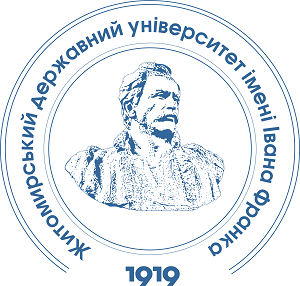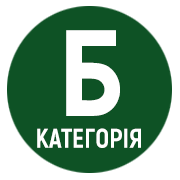PSYCHOLOGICAL FEATURES OF UKRAINIANS’ FEARS DURING THE THIRD YEAR OF THE FULL-SCALE INVASION OF THE COUNTRY
DOI:
https://doi.org/10.32782/psy-2025-5-10Keywords:
traumatic experience, civilian population, fears, anxiety, depression, PTSDAbstract
The article presents the results of the empirical study conducted in February-April 2025 with the participation of 815 Ukrainians, which aimed to identify the specific features of the civilian population’s psychoemotional state in the third year of a full-scale invasion of the country. The characteristics of anxiety, depression, and PTSD have been analyzed based on the respondents’ fears and individual traumatic experience. A moderate level of anxiety (9.2465), mild depressive symptoms (10.8344), and moderate post-traumatic stress symptoms (29.1896) have been identified. Emotional exhaustion (69.2%), apathy (42.7%), depression (48.1%), and sleep disorders (53.1%), as well as irritability and aggression towards others (41.8%) have been found to be the most common complaints about the psycho-emotional state. Positive correlations between these complaints, at a significance level of p < .001, have been established with the indicators of anxiety, depression, and post-traumatic stress symptoms. The characteristics of traumatic experiences during three years of full-scale war have been analyzed, and it has been noted that “experience of living in difficult conditions (as a result of terrorist events in the country)”, “loss of loved ones and acquaintances during military events”, and “loss of work” are the most significant components of individual traumatization. “Lack of prospects for the future”, “fear of occupation”, and “fear of losing one’s job” have been determined to be the predictors of anxiety, depression, and PTSD simultaneously, which makes it possible to analyze them as factors that cause the manifestation of all three traumatic states in the civilian population. Prospects for further work are based on improving the psychological assistance program for the civilian population, taking into account the specific results obtained.
References
Алексіна Н., Герасименко О., Лавриненко Д., Савченко О. Українська адаптація шкали для оцінки генералізованого тривожного розладу GAD-7: досвід діагностики в умовах воєнного стану. Інсайт: психологічні виміри суспільства. 2024. № 11. С. 77–103.
Анкета здоров’я пацієнта (PHQ-9). Український переклад УІКПТ. Pfizer Inc.2012. URL: https://is.gd/dpYvW5.
Житло та житлові умови україн_ок: результати опитування. URL: https://cedos.org.ua/researches/zhytlo-tazhytlovi-umovy-ukrayin_ok-rezultaty-opytuvannya/
Загальні настрої українців під час війни (листопад-грудень 2024). URL: https://ratinggroup.ua/research/ukraine/gen_opinion122024.html
Соболева Н., Злобіна О. Конфігурація страхів українців в умовах війни URL: https://isnasu.org.ua/popsci/021_Soboleva_Zlobina__Konfiguraciya_strahiv.php
Фролова Н. В. Психологічні особливості травматичного досвіду українців під час війни. Психологія і суспільство. 2024. № 1. С. 188–196.
Фролова Н. В. Структурна модель психологічної допомоги цивільному населенню під час війни в Україні. Габітус. 2025. № 69. С. 253–258.
Чого українці бояться більше за війну: результати опитування шокують. URL: https://society.comments.ua/ua/news/developments/chogo-ukrainci-boyatsya-bilshe-za-viynu-rezultati-opituvannya-shokuyut-758903.html
Bezsheiko V. Adaptation of the Clinician-Administered PTSD Scale and PTSD Checklist for Ukrainian population. PMGP [Internet]. 2016 Sep. 19 [cited 2024Nov.11];1(1):e010108.
Silver R. C., Holman E. A., Garfin D. R. Coping with cascading collective traumas in the United States. Nature Human Behaviour. 2021. Vol. 5. Р. 4–6.
Sparks S. W. Posttraumatic Stress Syndrome: What Is It? Journal of Trauma Nursing. 2018. Vol. 25(1). Р. 60–65. doi: 10.1097/JTN.0000000000000343. PMID: 29319653).






